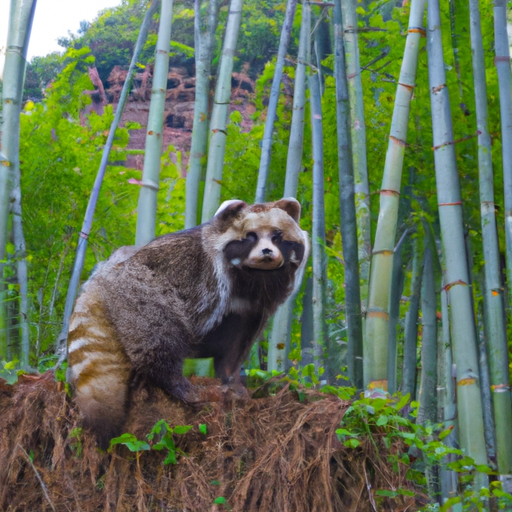When you hear the term raccoon dogs, you might imagine a strange hybrid creature, part raccoon, part dog. In reality, raccoon dogs, or Nyctereutes procyonoides, are a unique species native to East Asia. Often mistakenly identified as raccoons due to their similar markings, they are in fact more closely related to dogs and wolves. Let’s explore this fascinating creature that calls the wild landscapes of China its home.
Table of Contents
- Introduction to Raccoon Dogs
- Habitat and Behavior
- Diet and Lifespan
- Controversies and Conservation
- FAQs
Key Takeaways
- Raccoon dogs are unique species native to East Asia, more closely related to dogs and wolves than raccoons.
- They are adaptable creatures, living in various habitats from forests to urban areas.
- Their diet is diverse, consisting of rodents, insects, fruits, and amphibians.
- Raccoon dogs play a significant role in Chinese folklore and culture but face threats from fur farming and habitat destruction.
Introduction to Raccoon Dogs
Raccoon Dogs, known as Tanuki in Japan and Huan Gou or masked dogs in China, are members of the canid family, which includes dogs, wolves, and foxes. They are the only species in the genus Nyctereutes. Despite their raccoon-like appearance, they have no genetic ties to raccoons. Instead, their name comes from their physical resemblance to the North American raccoon, particularly their facial markings and bushy tail.
According to a study published in the Journal of Mammalogy, they evolved around 8.2 million years ago in the late Miocene period, making them among the oldest living canids.
For more insights into the canine family, you can explore this article about the history of dogs, which includes a section on the evolution of canids.
Habitat and Behavior
Raccoon dogs are adaptable creatures, inhabiting a range of environments from forests to mountainous areas and even urban environments. They prefer wet areas like swamps, river banks, and areas with dense vegetation.
These animals are monogamous, with pairs staying together from one breeding season to the next. They hibernate in the winter, a trait that’s unique among canids.
Raccoon dogs are generally quiet but can produce a wide variety of sounds, including whines, growls, and howls, to communicate. To learn more about canine communication, check out this post.
Diet and Lifespan
Raccoon dogs are omnivores with a diverse diet. They eat rodents, insects, fruits, amphibians, and birds. When food is scarce in the winter, they can survive on a diet of carrion and plant matter.
In the wild, raccoon dogs live for about 3-4 years, but in captivity, they can live up to 11 years.
Controversies and Conservation
Despite being a part of Chinese folklore and culture, raccoon dogs face significant threats. They are often hunted for their fur, which is used in the fur industry. In addition, habitat loss due to urbanization and agriculture poses a danger to their population.
Conservation efforts are underway to protect this unique species. There are laws in place in many countries banning the hunting of raccoon dogs. However, more needs to be done to enforce these laws and educate the public about the importance of conserving raccoon dogs.
To learn more about conservation efforts for canines, you can read this article.
FAQs
1. Are raccoon dogs related to raccoons?
Despite their name and appearance, raccoon dogs are not related to raccoons. They are a unique species in the canid family, more closely related to dogs and wolves.
2. What do raccoon dogs eat?
Raccoon dogs are omnivores, eating a variety of foods including rodents, insects, fruits, amphibians, and birds.
3. Are raccoon dogs endangered?
While not listed as endangered, raccoon dogs face threats from hunting, fur farming, and habitat loss.
In conclusion, raccoon dogs are fascinating creatures with a unique place in the animal kingdom and cultural significance in East Asia. Understanding and appreciating their role in the ecosystem is essential for their conservation, ensuring that future generations can also marvel at these intriguing creatures.



